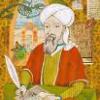-
Content count
6,364 -
Joined
-
Last visited
-
Days Won
3
Posts posted by Dainin
-
-
2010 Tactical Internal Martial Arts Teacher Training Course By Hal Mosher and Allen Pittman
I just saw this on the web. The curriculum sounds amazing (see link above). Both of these teachers were students of Robert W. Smith, then later spent a lot of time training in Taiwan with some of Smith's teachers, as well as other people. Unfortunately I have other training commitments in 2010, so I won't be going...but hopefully they'll do it again in the future!
-
Do you think it's really him, or an impostor? The one I remember always typed with the caps lock on!
-
Interesting stuff...I wonder how many of the "Cirque de Soleil" type contortionists have this condition, or is it their training...or maybe a combination of the two.
-
The last picture actually is a yoga asana called yoganidrasana, not a pathology
 .
. -
It's been a while since I've seen it, but I think I remember in Dr. Yang Jwing Ming and Shou Yu Liang's book on bagua they show some exercises being done with cinder blocks, like carrying them around the circle with arms extended, palms up, etc. I'm not certain what the author's backgrounds are in this art, or if these conditioning exercises are typically characteristic in it's training.
My tai chi teacher is always on my case for too much un-necessary muscular tension in my upper body while doing the movements!
-
I am he
As you are he
As you are me
And we are all together.
-
-
Could he defeat God's Direct Contact, Supreme Master Ching Hai, in dharma combat? I wonder...
-
-
A similar story was announced recently about Brian Jones also. I think the case is being re-investigated after 40 years.
Some cat who used to be Hendrix's roadie came out recently and said that Hendrix's (now-deceased) manager admitted that he killed him.
For the record. There was a lengthy interview a few months ago in one of those guitar magazines.

-
Ralis, I agree with your point to a large extent, but let's not forget that many of the most "shamanistic" performers of this period (Morrison, Joplin, Hendrix, Tim Buckley, etc) died of overdoses. This would not be the case with traditional shamans (shamen?). Also, following charismatic leaders can sometimes lead down very bad paths, if they lack certain other values.
Music was an important component of the 1960s-70s societal change, but not the only one: civil rights, feminism, ecology, satellite communications, etc. all emerged around this time.
-
Side Note:
Drew, the guy you referred to who was supposed to have lived to 250 year old or there abouts
was Lee Ching-yuen (Li Ching Yun). One account I read said he was born in 1678 and died in 1930,
although that would be hard to prove for certain. :-)
There's more about him here:
http://plantcures.com/Lichingyun.html
Best wishes from Iskote...

Just to add a side note to your side note, Stuart Alve Olson has translated what is purported to be Li Ching Yun's writings on Eight Section Brocade: Qigong Teachings of a Taoist Immortal: The Eight Essential Exercises of Master Li Ching-yun .
He also has an Eight Brocades Workshop DVD set which sounds quite extensive and detailed. I ordered the book last week, so if I like it I'll probably get the DVD set eventually.
-
 1
1
-
-
I remember seeing a film in anthropology class years ago that had a section on polyandry. It was about a tribe in the Himalayas, I don't think they were Tibetans necessarily. They were animal herders, and one husband would go out with the flocks, while the other stayed at home, and then they would rotate. So it wasn't like they were both there serving the wife at all times!
-
Ho ho ho!!!
-
He talks about the One-Ten meditation in one of his books and gives no instruction. If anyone knows this and would be willing to share, it would be appreciated.
You can find the instructions here:
I think it is also a bonus on the DVD version of his "Chi Kung: The Healing Workout" video (I have the VHS). This is one of my favorite qigong videos, with a really good sequence of movements and good production values.
-
Interesting points Gold, thanks.
Your mention of the psychological aspects of this power reminds of Alejandro
Jodorowsky's movie "El Topo."
One of the master gunfighters El Topo had to face had the power of letting bullets
pass through him without causing any harm, through non-resistance. By causing
something unexpected to happen, the master's powers were disturbed and he lost.
-
The "anti-bullet" nei gong protection didn't work out very well in the Boxer Rebellion,
nor for those folks in the Congo. But maybe John Chang has better "special powers"!
There is an old martial arts movie called "Legendary Weapons of China" that includes
discussion of this issue.
-
Quite a few teachers that have been certified by their lineages as being "enlightened masters" later went on to exhibit all sorts of behaviors that would be generally considered immoral/unethical: drinking themselves to death, committing adultery with their students, lying, stealing funds, etc. I'd be interested in hearing some of your opinions on these type of questions:
Should an enlightened person automatically manifest a higher level of ethics/morality just by virtue of their enlightenment?
Is it possible that all of these masters were not really enlightened?
Could they have been enlightened once and then lost it? Does this happen? Is enlightenment as impermanent as everything else?
If a teacher acts immorally, does this negate the value of their teachings, since it didn't work for them?
Is it possible that we since we are not at their level of "enlightenment" their "crazy wisdom" cannot be understood by us, and should not be viewed as unethical?
Thank you.
-
In my opinion, from the very beginning all wild lions are fully liberated.
They do not need to achieve it, because their actions are pure expressions
of lion-ness.
Only those whose karma leads them to be captured by humans
and wind up in zoos, circuses or Las Vegas lose this liberation,
and enter the hell realms.
-
Tim Ferriss just did a nice overview of this topic on his blog earlier this week:
Lucid Dreaming: A Beginner's Guide
There is quite a bit of interesting material on his site, even if you don't care about the four hour work week angle.
-
Perhaps if Sri Gary Olsen and Supreme Master Ching Hai were to meet...and "co-mingle", their offspring might usher humanity into the era of ...The Messiah!
-
Hi Markern,
After reading your post, my feeling is that you might benefit from integrating savasana (the yogic corpse pose) into your morning practice. Do not try to control the breath in any way while doing this, just relax your body and breath and sink into the ground.
Since the beginning of the year, my usual morning practice has been 10 minutes deep breathing (the AYP Spinal Breathing Pranayama), followed by 25 minutes of zazen (counting breaths plus attention to nasal air flow), then 10 minutes of savasana. I usually do a longer session on weekends. I save the qigong, tai chi, and other more energetic stuff for a separate session at night. I haven't run into any problems with this schedule.
You are now doing energetic practices throughout the day. It might be beneficial to you to concentrate your energy work into a single daily session and allow your system time to relax and integrate this work during the rest of the day. It works for me...perhaps you'll find it helpful. Good luck!
-
Didn't the pharoahs also have a serpent projecting from their headdress near the third eye?
-
Let's not forget swimming either!
There is a system call Total Immersion which focuses on swimming faster with less effort by improving form and technique for greater efficiency. It's kind of like an aquatic version of the "Chi Running" book. In fact the two authors sometimes do workshops together.
I remember watching Ian Thorpe swim in the Olympics a few years back. His form was so smooth it looked like he wasn't trying that hard, yet he was winning medals.


Do any Bums stare at Goats?
in General Discussion
Posted
Regarding Vortex's (Vertices?) last post, wasn't there a guy a while back that talked about a "key sound" that men could make to facilitate multiple orgasms (for themselves I mean)? I forgot what his name was. Is this article by Suzie Heumann similar to that guy's concept?